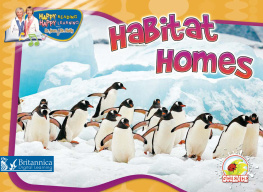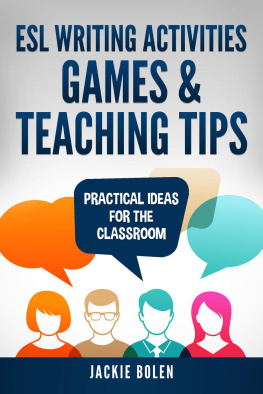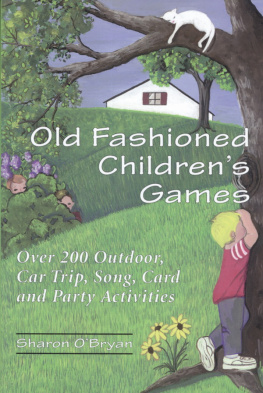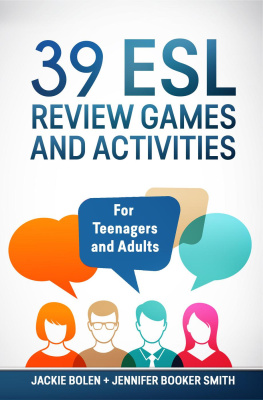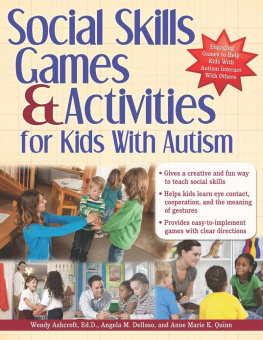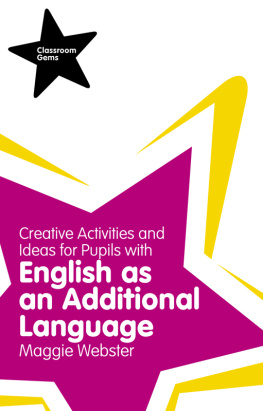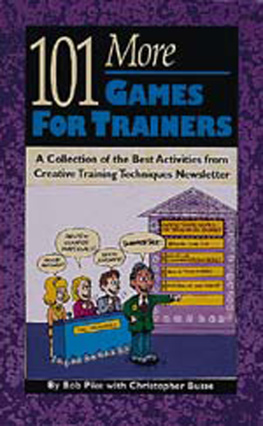Transition Tips and Tricksfor TeachersThis book is dedicated to my aunts,
Mary McCracken and Elizabeth Zimmerman,
who added a little magic to my childhood.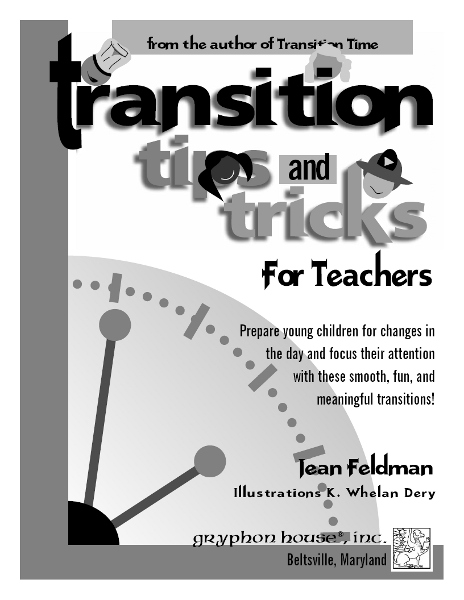 AcknowledgmentsSpecial thanks to Kathy Charner, who is the best editor and magician of all!
AcknowledgmentsSpecial thanks to Kathy Charner, who is the best editor and magician of all!
She can take my ideas and scribbles and turn them into a wonderful book for teachers.
Thanks to all the teachers who so generously shared their ideas and
tricks with me so that I could pass them on to you.
Thanks to the children whose smiles, laughter, and twinkling eyes continue to verify
that the activities in this book do work.
And thanks to my family who humors me, supports me,
and is, indeed, the wind beneath my wings! Gryphon House books are available at special discount when purchased in bulk for special premiums and sales promotions as well as for fund-raising use. Special editions or book excerpts also can be created to specification. For details, contact the Director of Marketing at the address below.
Gryphon House books are available at special discount when purchased in bulk for special premiums and sales promotions as well as for fund-raising use. Special editions or book excerpts also can be created to specification. For details, contact the Director of Marketing at the address below.
Gryphon House, Inc., P.O. Box, Beltsville MD 20705-0207.Reprinted April 2009Copyright 2000, Jean Feldman.Published by Gryphon House, Inc., P.O. Box 207, Beltsville, MD 20704.All rights reserved. No part of this publication may be reproduced, stored in a retrieval system, or transmitted, in any form or by any means, electronic, mechanical, photocopying, microfilming, recording, or otherwise, without permission of the publisher.Illustrations by K.
Whelan Dery.Requests for permission to make copies of any part of the work should be mailed to Gryphon House, Inc.Library of Congress Cataloging-in-Publication Data
Feldman, Jean R., 1947-Transition tips and tricks for teachers: prepare young children for changes in the day and focus their attention with these smooth, fun, and meaningful transitions! / Jean Feldman; illustrations by K. Whelan Dery.p. cm.Includes bibliographical references and index.ISBN: 978-0-87659-216-8Early childhood educationActivity programs. 2. Early childhood teachers. I.
Title.LB1139.35.A37 F48 2000372.13dc2100-035368
Table of Contents
Tune Into Children and
Tune Into Learning!
Teaching and guiding children through daily transitions requires a little magic, and this book is full of special tricks for you! With these activities your day will move more smoothly, behavior problems will decrease, and you will be stimulating childrens brains. Above all, children will be delighted with the songs, puppets, props, stories, and games.Brain research provides insight to help us tune into children and how they learn. This book integrates brain research with practical classroom experience. Not surprisingly, the applications brain experts suggest are the very ones loving, child-centered teachers and parents have used for centuries!Underlying brain research principles reflected in this book include:The brain loves novelty. The best way to get childrens attention and interest is to surprise them with something new!The brain likes to be challenged. Children are naturally curious and interested in the world around them.
The brain enjoys thinkingthats what it was designed to do! We can enhance thinking by asking open-ended questions.Sensory stimulation is essential to learning. The best way for information to reach the brain is through the senses. The more senses involved in an activity, the more likely it is that learning will occur.Feedback is critical to learning. The more immediate the feedback, the more likely that permanent learning will occur.Children thrive in a safe, secure environment. If children feel threatened or are stressed, they will not achieve optimal development.The brain responds positively to schedules, routines, and rituals. Schedules and routines help children know what to expect.
Daily rituals, such as greetings and songs, jump start the brain and act like indicators to elicit desired behaviors.Children need caring, consistent relationships and positive role models. Because children learn more from our actions than our words, we should model the behavior we expect from them.Emotional factors are important to learning. Children need to feel good about themselves and positive about school. Community celebrations and group activities can help foster these attitudes.The brain needs healthy foods, rest, and water. Children need healthy snacks and meals for mental as well as physical growth. Rest gives the brain time to process information.
Water is also needed frequently to rehydrate the brain.Timing must be considered. The brain thrives on a balance of active and quiet periods. Children need brain breaks when they get up, move around, and get oxygen going to the brain.The classroom environment has an impact on learning. So many factors in the classroom can enhance or detract from learning. For example, the brain likes natural sunlight, fresh air, and cool temperatures. It also likes plants and softness.
Choose neutral background colors, so children and their work receive the most attention. Aromas, such as peppermint and citrus, can stimulate childrens brains, while lavender tends to calm behavior. Seating arrangements can also affect learning. Having children work in a circle or small groups facing each other encourages group cohesiveness.Level of interest and play are of utmost consideration. Children are more likely to learn if its fun and interesting to them.The brain learns through integration and association. Learning should be integrated and should occur within the context of daily experiences.
Children need to associate new learning with previous experiences. Facts learned in isolation are soon forgotten!Language is essential to learning. Children need to talk about their experiences to own them.Laughter is good for the brain. A good laugh gets oxygen going to the brain and relieves stress.Stories are a powerful way to store experiences in the brain. Read and tell stories frequently to children, and involve them in acting out stories.The brain loves music and rhythm. Music, music, music! Music can be used to enhance learning, and songs and chants are a convenient way for the brain to store information.Movement stimulates the brain.
Running, jumping, marching, skipping, twirling, galloping, and swinging all exercise the brain.
Next page

